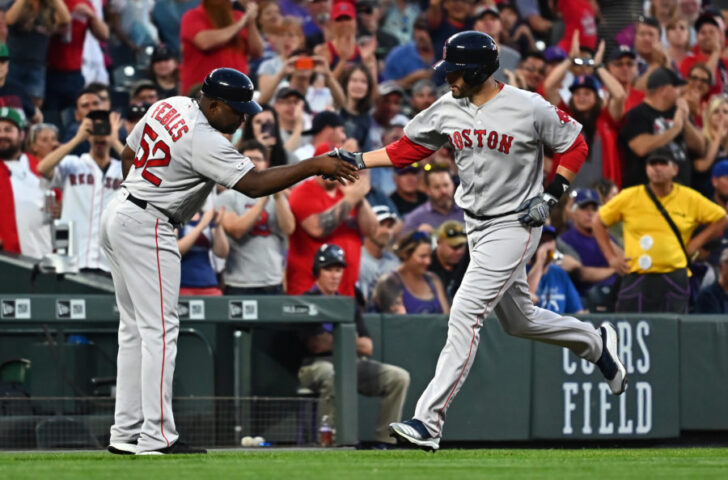Balls sail out of every ballpark in the majors. When it happens at Coors Field, the instant reaction is to blame the altitude. The oft-used excuse is no longer credible for the Colorado Rockies.
No National League club has allowed more long balls than Rockies’ pitchers (242). The Seattle Mariners (245) and Baltimore Orioles (280) are the only two clubs in the majors that have allowed more.
The season total for the Rockies climbed once again Wednesday. Tim Melville allowed four and Jesus Tinoco allowed one as the Rockies failed to complete a sweep of the visiting St. Louis Cardinals. Each of the five homers given up by the staff went over 395 feet. The total included a ball hit by Rangel Ravelo that broke the franchise’s Statcast record:
487 Feet! Rangel Ravelo with the longest Cardinals Homerun of the Statcast Era! #stlcards pic.twitter.com/C7n1OtM4Ad
— Gateway Grinders (@gatewaygrinders) September 12, 2019
More importantly, each would’ve flown over any wall in the league. Using the location of the contest as an excuse doesn’t work.
Among the league’s acclaimed hitter’s parks, several offer better platforms for home runs. In ESPN’s Park Factor, the Rockies’ home park is third in home-run production.
“In terms of an offensive haven, there are other places I’d rather play for offensive numbers,” former catcher and 14-year veteran Chris Iannetta said. “Leftfield of Fenway Park is a joke, rightfield at Yankee Stadium is a joke. Milwaukee is a launching pad, Cincinnati is a launching pad. Those are all better places to hit than Coors.”
The vast dimensions of Coors Field hardly lend themselves to home runs. No other team boasts the same area in the outfield. Extra-base hits falling in the gaps in understandable, but over the wall – to this mass degree – isn’t.
The sentiment spreads past just the Rockies’ latest loss. Each of the starters and relievers on the roster has had struggles with the long ball. Even if the balls are “juiced”, as many have speculated, other teams haven’t had the same problems.
No other team in the league boasts an entire opening day rotation that was on par to allow 25-or-more home runs apiece. Similarly, the Rockies’ bullpen consists of five separate relievers that have allowed double-digit long balls. At least three more are right on the cusp.
Control is a leading issue. Across the NL, only two pitching staffs have walked more batters. No team has struck out fewer – both signs that the control of the club’s hurlers is wayward.
Kyle Freeland is the leading example. Due to mechanical miscues, his fastball went from inside to directly over the plate. He’s allowed a career-high 25 home runs in only 20 starts. The ballpark is not to blame.
The on-pace road numbers for the southpaw would still be a lofty career-high of 27 home runs if he made 30 starts. Last year, Freeland allowed 17 home runs in 33 starts. At home, he allowed 11.
Similarly, German Marquez, who was nearly untouchable in the second half last year has struggled. He allowed a career-high 29 home runs before hitting the injured list with a sore pitching elbow. In the second half of last year, he allowed seven.
Both pitchers didn’t switch uniforms this year. The problems that failed to materialize last year are the same ones they’re dealing with this year.
The home run record for the majors has already been broken with two weeks left in the season. Across the league, players are focusing more on hitting the ball out of the park and less on seeing-eye singles.
It would be easy to also suggest – instead of blaming the home ballpark – that the Rockies are merely a byproduct of the trend. The context, when added to all other teams as well, still doesn’t put the club’s hurlers in a glowing light.
The trend may not stop next year. Each of the Rockies’ opening day starters is projected to return to the club, though Tyler Anderson will likely still be rehabbing from left knee surgery. Replacing Chad Bettis with Peter Lambert and Anderson with Chi Chi Gonzalez or Jeff Hoffman would likely exacerbate the problems.
Past pitchers have shown it’s possible to succeed at Coors Field. Ubaldo Jimenez and Freeland last year have even been among the league’s best.
The current plan of attack isn’t working. Unfortunately, building a higher wall – similar to what the franchise did in 2016 – is no longer feasible.



